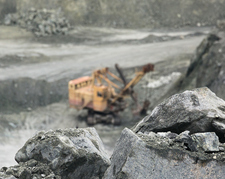A New York City judge recently handed down an important ruling in a mesothelioma cancer lawsuit brought by a former electrician who claims the defendant, a boiler manufacturer, caused his mesothelioma by exposing him to deadly asbestos fibers. The lawsuit names Lancaster, Pennsylvania-based Burnham LLC as the defendant, alleging the company knowingly produced and shipped products that required after-market parts made with asbestos, specifically asbestos-cement used as an insulation for the equipment.
The plaintiff, now unfortunately deceased, claimed in his lawsuit that during his time as an electrician with his employer, Vanderlin Electrical Contractors, he frequently worked with boilers manufactured by Burnham LLC. The victim claimed that the units delivered by the defendant to his job site at Wesleyan College without the required insulation “jacket” and that insulation workers also on site had to mix asbestos cement to create the insulation needed to complete installation.
Furthermore, the plaintiff, in his sworn deposition testimony before his passing, recalled he was required to remove the very same asbestos insulation on the boilers in order to access valves on the boilers, and would breathe in the dust created during both the application and removal of the insulation. As a result of years of exposure to asbestos fibers in the course of working on boilers produced by Burnham LLC, the plaintiff claimed he developed mesothelioma cancer, a rare and deadly form of cancer directly linked to asbestos exposure.
 Asbestos & Mesothelioma Law Blog
Asbestos & Mesothelioma Law Blog






